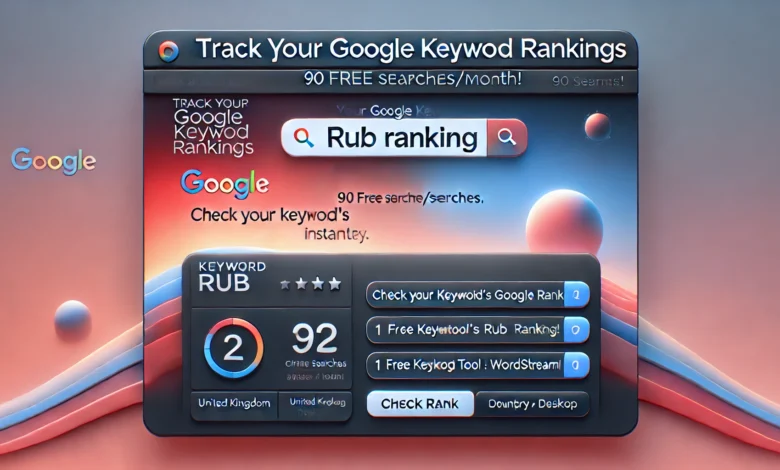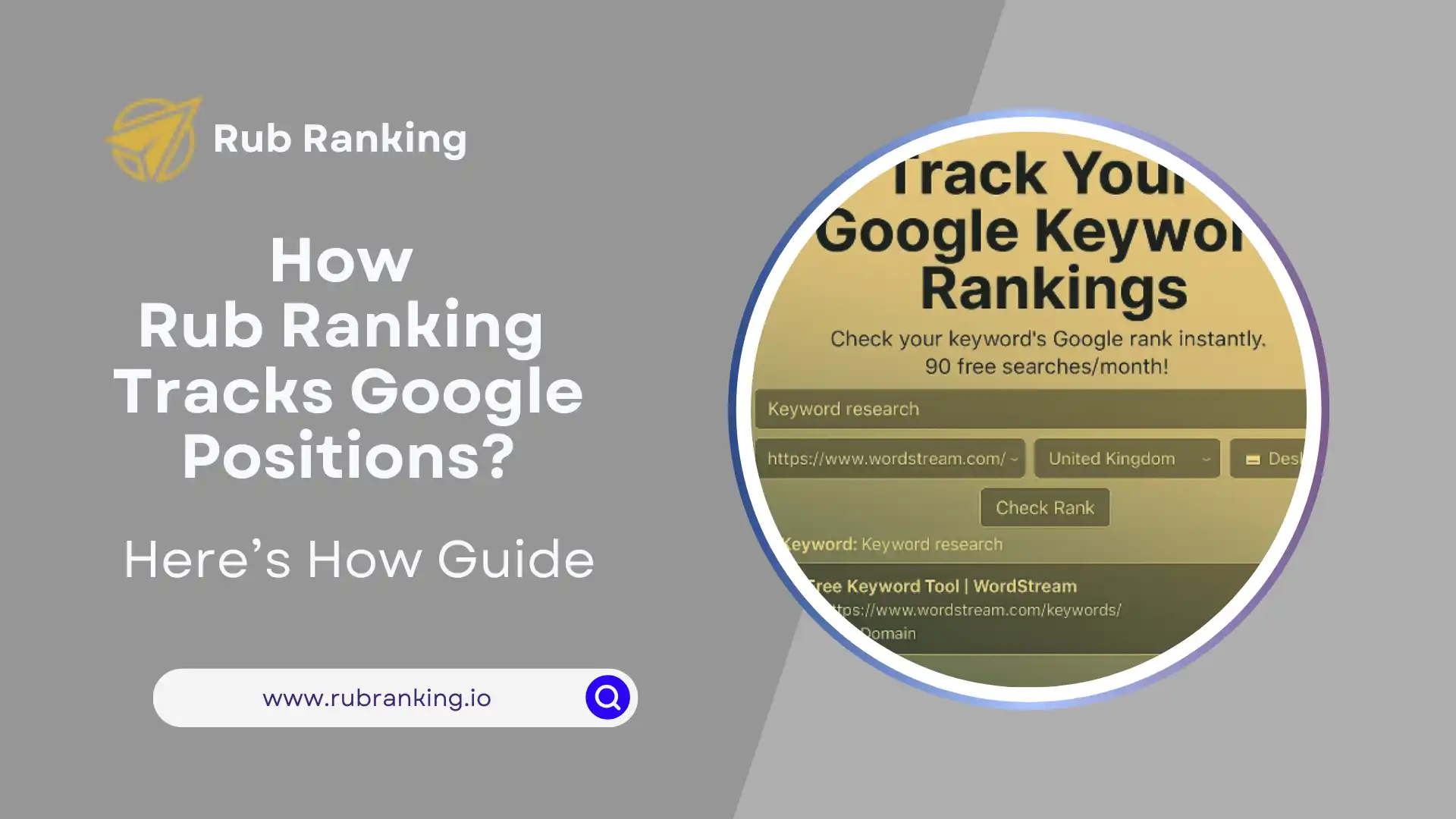Rub Ranking: Everything You Need to Know

Introduction to Rub Ranking
When you first come across the term rub ranking, it might sound a bit unfamiliar or even confusing. However, in the world of digital platforms, data analytics, and search visibility, rub ranking is becoming an important phrase. Essentially, rub is a system that determines the priority, value, or position of content, users, or items within a structured environment. Just like how Google uses algorithms to rank websites or how social media platforms push trending posts to the top of your feed, ranking provides a framework for sorting and prioritizing information.
The concept is not only limited to websites or search engines. It also finds application in e-commerce, gaming, content streaming services, and even academic evaluation systems. By relying on specific rules, metrics, or formulas, rub ranking ensures that the most relevant or valuable elements rise to the top. This makes it easier for users to access what they need without wasting time scrolling endlessly through irrelevant content.
Understanding rub ranking matters because it plays a crucial role in visibility. If you run an online business, produce digital content, or simply want to understand why some platforms recommend certain things over others, you’ll benefit from diving deep into how rub ranking works. The more you know about it, the better equipped you’ll be to optimize your online presence and improve your performance in the digital space.
How Rub Ranking Works
At its core, rub ranking functions through a series of criteria or factors that determine placement. Think of it as a grading system where each action, interaction, or quality earns points. These points are then used to calculate an overall rank. For example, in search engines, ranking may depend on how relevant your content is to a keyword, how authoritative your website appears, and how many people engage with your content.
One of the most important aspects of rub ranking is relevance. Platforms want to make sure that when you search for something, you get results that actually answer your query. This means that ranking systems often look at text, metadata, and context to evaluate if the content matches what users want. In addition to relevance, engagement is another critical factor. Content that gets more clicks, shares, likes, or watch time usually ranks higher because it signals value to the system.
Another layer of rub is trustworthiness and authority. Platforms don’t just want to push popular content—they also want reliable, accurate, and safe information. That’s why websites with high credibility and solid reputations often appear at the top of search results. In summary, rub ranking is a combination of different elements: relevance, authority, engagement, and consistency. Each factor plays its part in determining what gets noticed and what gets buried.
The Role of Rub Ranking in Digital Marketing

For digital marketers, rub ranking is more than just a technical detail—it’s a roadmap to visibility and success. If your business operates online, you want to make sure that potential customers can find you. Rub ranking determines how easy or hard that process will be. A higher ranking means more people see your content, which translates into higher traffic, brand awareness, and sales opportunities.
One major way ranking influences marketing is through search engine optimization (SEO). Marketers spend significant effort optimizing websites, blogs, and ads to perform well in rankings. They focus on keywords, high-quality content, backlinks, and user experience, all with the goal of boosting their rub ranking. Without paying attention to these details, a brand can get lost in the noise, even if their product or service is top-notch.
Social media marketing also heavily depends on rub . Algorithms decide which posts show up on a user’s feed, which videos get suggested, and which accounts gain more visibility. This is why creating engaging, shareable content is so critical. If your content resonates with the algorithm’s ranking system, it will be prioritized and pushed to larger audiences. Marketers who ignore rub ranking risk being invisible in competitive digital environments.
Benefits of Understanding Rub Ranking
The first and most obvious benefit of understanding ranking is visibility. Whether you’re a business owner, a blogger, or even a gamer, ranking higher in a system gives you better exposure. More people can find you, interact with your content, and recognize your value. This visibility can directly translate into financial benefits if you’re monetizing your presence online.
Another benefit is strategic improvement. By studying how rub ranking works, you can identify areas where you’re falling short. For example, maybe your content isn’t optimized with the right keywords, or perhaps your social media posts aren’t engaging enough to rank well. Once you know the factors involved, you can make targeted improvements that help you climb the ranks.
Finally, understanding rub ranking provides a sense of control. Instead of blindly posting or hoping for luck, you can make calculated moves to improve your ranking. This makes your digital journey less of a guessing game and more of a strategy-driven process. Whether your goal is to grow an audience, boost your business, or simply share your passion, rub ranking can help guide you in the right direction.
Challenges in Rub Ranking
While rub ranking offers clear advantages, it’s not without its challenges. One of the biggest hurdles is the constantly changing algorithms. Platforms like Google, YouTube, and Instagram frequently update their ranking systems to improve user experience or eliminate spam. This means that strategies that worked yesterday might not work tomorrow. Marketers and content creators need to stay flexible and continuously learn to keep up with these changes.
Another challenge is competition. Everyone wants to rank higher, and the digital space is crowded. It’s not enough to just publish content—you need to publish high-quality, unique, and optimized content consistently. This can be overwhelming, especially for small businesses or individuals without large marketing teams.
Lastly, there’s the issue of fairness. Sometimes, rub ranking systems favor big players with more resources, leaving smaller creators struggling for visibility. Paid ads, sponsored content, and influencer partnerships can give larger entities an edge, making it difficult for newcomers to climb the ranks. While not impossible, it does require more creativity, persistence, and smart strategy to overcome these challenges.
How to Improve Your Rub Ranking
Improving your rub ranking isn’t about shortcuts—it’s about playing the long game with smart strategies. The first step is to focus on quality content. Whether it’s a blog, video, or product description, your content should be informative, engaging, and valuable. Algorithms are designed to reward content that keeps users satisfied, so the better your material, the higher your chances of ranking well.
Next, invest time in optimization. This includes keyword research, proper formatting, clear headlines, and multimedia integration. Optimization ensures that both humans and algorithms can easily understand and appreciate your content. On top of that, improving your website speed, mobile friendliness, and overall user experience can also give your ranking a boost.
Lastly, don’t underestimate the power of engagement. Encourage users to interact with your content—leave comments, share posts, or spend more time watching videos. The more interaction your content gets, the more valuable it looks to the ranking system. Over time, consistent engagement can push you up the ranks and secure a strong digital presence.
Future of Rub Ranking
As technology evolves, rub ranking systems are becoming more sophisticated. Artificial intelligence and machine learning are already shaping how rankings work. Instead of simply counting clicks or keywords, future rub ranking systems may evaluate deeper elements such as user intent, emotional impact, and even voice search patterns. This means businesses and creators will need to be more adaptive than ever.
Another trend we’re likely to see is the rise of personalized rub ranking. Instead of one-size-fits-all rankings, platforms may tailor results based on individual user behavior. For example, what ranks at the top of your feed might be completely different from someone else’s because the system knows your preferences. This makes rub ranking both more dynamic and more challenging to master.
Finally, as regulations around data and privacy continue to tighten, rub ranking will also need to adapt. Platforms may need to become more transparent about how they rank content, giving users and businesses clearer insights into the system. The future of rub ranking looks promising but will require ongoing learning and adaptation from anyone who wants to thrive online.
Conclusion
Rub ranking is more than just a technical term—it’s a powerful system that shapes how we interact with the digital world. From search engines and social media to e-commerce and gaming, rub ranking decides what gets attention and what doesn’t. Understanding it gives you a competitive edge, whether you’re trying to grow your business, boost your brand, or simply increase your visibility online.
While challenges like algorithm changes and competition exist, the benefits of mastering rub ranking far outweigh the difficulties. With quality content, smart optimization, and consistent engagement, you can improve your position and reach your goals. As technology advances, staying ahead of the curve in rub ranking will become even more important.
In a digital world overflowing with content, rub ranking is the invisible hand that organizes the chaos. Learn it, adapt to it, and use it to your advantage—you’ll thank yourself later.


